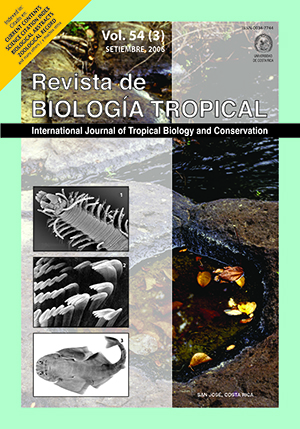Abstract
The population dynamics of an intertidal population of Megapitaria squalida was studied from September 2002 to February 2003 in Bahía Magdalena, Mexico. To obtain information about the artisanal and recreational fishery of M. squalida, local fishermen at different parts of the bay were interviewed. Clam densities were determined at one unexploited and two exploited sites along perpendicular transects from the shore line. Average clam density was 2.01±1.41 ind/m2, densities did not differ significantly between the three sampling sites. The length-total mass relation was Mtot = 0.0001*SL3.1644 (r2 = 0.9804, n = 92) and the length-tissue mass relation was Mtis = 0.0002*SL2.7144 (r2 = 0.945, n = 92). Von Bertalanffy-growth parameters were determined using marked individuals. Strong interindividual and also seasonal differences in growth were observed. Average annual values were: K = 0.655, L∞ = 83 mm. Since M. squalida can reach a shell length of more than 135 mm in deeper waters, it is necessary to consider intertidal and subtidal populations separately. Average total mortality (Z) was 1.61 y-1. No fishing mortality was calculated because total mortality Z at the unexploited control site was higher than Z at the exploited sites. It appears that M. squalida migrates into deeper water with increasing shell length, as average shell length increased at lower tidal levels and marked specimens showed a clear migration towards deeper waters. As yet no overexploitation could be found in the study area.
##plugins.facebook.comentarios##

This work is licensed under a Creative Commons Attribution 4.0 International License.
Copyright (c) 2006 Revista de Biología Tropical






